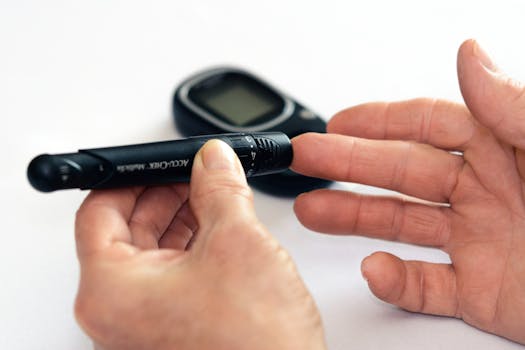Many adults turn to ready-made shakes, powdered mixes, and fortified smoothies to meet protein needs, and it’s important to understand how these products interact with blood sugar. In this article we look at evidence-based guidance so you can choose options that support stable glucose levels, especially if you have prediabetes or diabetes. Early decisions about ingredients, serving size, and timing can make a big difference in post-meal blood glucose response.
Protein drinks in adults: How they affect blood sugar
Protein itself has a minimal direct impact on blood glucose compared with carbohydrates. When consumed alone, protein slows gastric emptying and stimulates insulin and incretin hormones, which can blunt the rise in blood glucose after a meal. However, most commercial protein drinks contain added sugars, milk solids, or high-glycemic carbohydrate mixes that change the overall effect. Reading labels and understanding the total carbohydrate and added sugar content is essential for predicting blood sugar response.
How composition and timing change the response
Several factors determine whether a protein beverage will keep blood sugar steady or cause spikes:
- Carbohydrate and added sugar: Drinks with 15–30 grams of rapidly digested carbs can raise blood glucose noticeably. Look for products labeled low in added sugars or with single-digit grams of sugar per serving.
- Protein type and amount: Whey is rapidly digested and elicits a strong insulin response, while casein digests slower. Plant proteins (pea, soy) have variable effects depending on blends and additives. A typical adult serving of 20–30 grams of protein will help increase satiety and moderate post-meal glucose.
- Fat and fiber content: Formulations that include healthy fats or fiber slow digestion and reduce glycemic impact. A shake with added chia, flax, or nut butter will tend to produce smaller glucose excursions than a thin, sugary drink.
- Timing relative to meals: Using a protein drink as a meal replacement will have different effects than consuming it as a snack between meals. Together with carbohydrate-containing meals, protein can help blunt the glucose rise from carbs.
Choosing the best low sugar protein drinks
When shopping for the best low sugar protein drinks, prioritize total carbohydrates and the ingredient list over marketing claims. Seek out products with:
- Less than 5–8 grams of added sugars per serving, or labeled “no added sugar.”
- 20–30 grams of protein from a single source or a balanced blend.
- Minimal unnecessary additives, artificial sweeteners if desired, and some fiber or healthy fat.
For people managing diabetes, powdered formulations often offer better control because you can mix them to your preferences and add extra fiber or healthy fats. For more information about protein powder choices and diabetes-specific guidance, see descriptive anchor text.
Practical tips for blood-sugar-friendly protein drinks
- Measure portions carefully. A “serving” on the package may be larger than you need.
- Pair protein drinks with fiber or produce—spinach, berries, or oats—to blunt peaks.
- Prefer unsweetened or lightly sweetened formulas; consider natural low-calorie sweeteners if taste is a concern.
- Check sodium and saturated fat if you use drinks frequently, as some formulations are high in these.
- Monitor your response. If you check glucose, test before and 1–2 hours after trying a new product to see its personal effect.
Reliable public health sources emphasize that individualized meal planning is key to managing glucose. The CDC offers practical guidance on eating patterns and carbohydrate management for people with diabetes, which can help when incorporating protein beverages into your routine: CDC — Eat Well.
Who should be cautious?
People with diabetes, those on insulin or insulin-secretagogues, and individuals with renal disease should consult a clinician before adding high-protein regimens or concentrated protein supplements to their diet. Registered dietitians can help tailor choices to caloric goals, medication timing, and kidney function. For most healthy adults, low-sugar protein drinks can be a convenient way to meet protein needs without destabilizing blood sugar when chosen carefully.
Simple recipes to lower glycemic impact
Try mixing an unsweetened protein powder with unsweetened plant milk, a tablespoon of nut butter, a small handful of berries, and a spoonful of ground flaxseed. This combination increases fiber and fat to smooth glucose response while delivering a satisfying amount of protein.
- Unsweetened whey or pea protein + unsweetened almond milk + 1 tbsp peanut butter + 1 tbsp chia = balanced snack.
- Casein powder + plain Greek yogurt + cinnamon = slower digestion and longer fullness.
Personal experimentation, label literacy, and professional guidance will help you find the best options for your health goals.
Takeaways
- Protein itself has a modest effect on blood glucose, but added sugars in drinks can cause spikes.
- Choose low-sugar, higher-fiber formulations and consider adding healthy fats to reduce glycemic impact.
- Measure portions, monitor your own blood glucose response, and consult professionals if you have diabetes or kidney disease.
FAQ — Are protein drinks safe for people with diabetes?
Most low-sugar protein drinks can be safe when used appropriately. The key is to pick products with minimal added sugars, monitor portion size, and coordinate timing with medications. Discuss new supplements with your healthcare provider, particularly if you use insulin or have kidney disease.
FAQ — Which protein type is best to stabilize blood sugar?
Whey protein elicits a strong insulin response and can be effective at reducing postprandial glucose when paired with carbohydrates; casein releases amino acids more slowly and may prolong satiety. Plant proteins like pea or soy are good alternatives but check formulations for added carbs.






